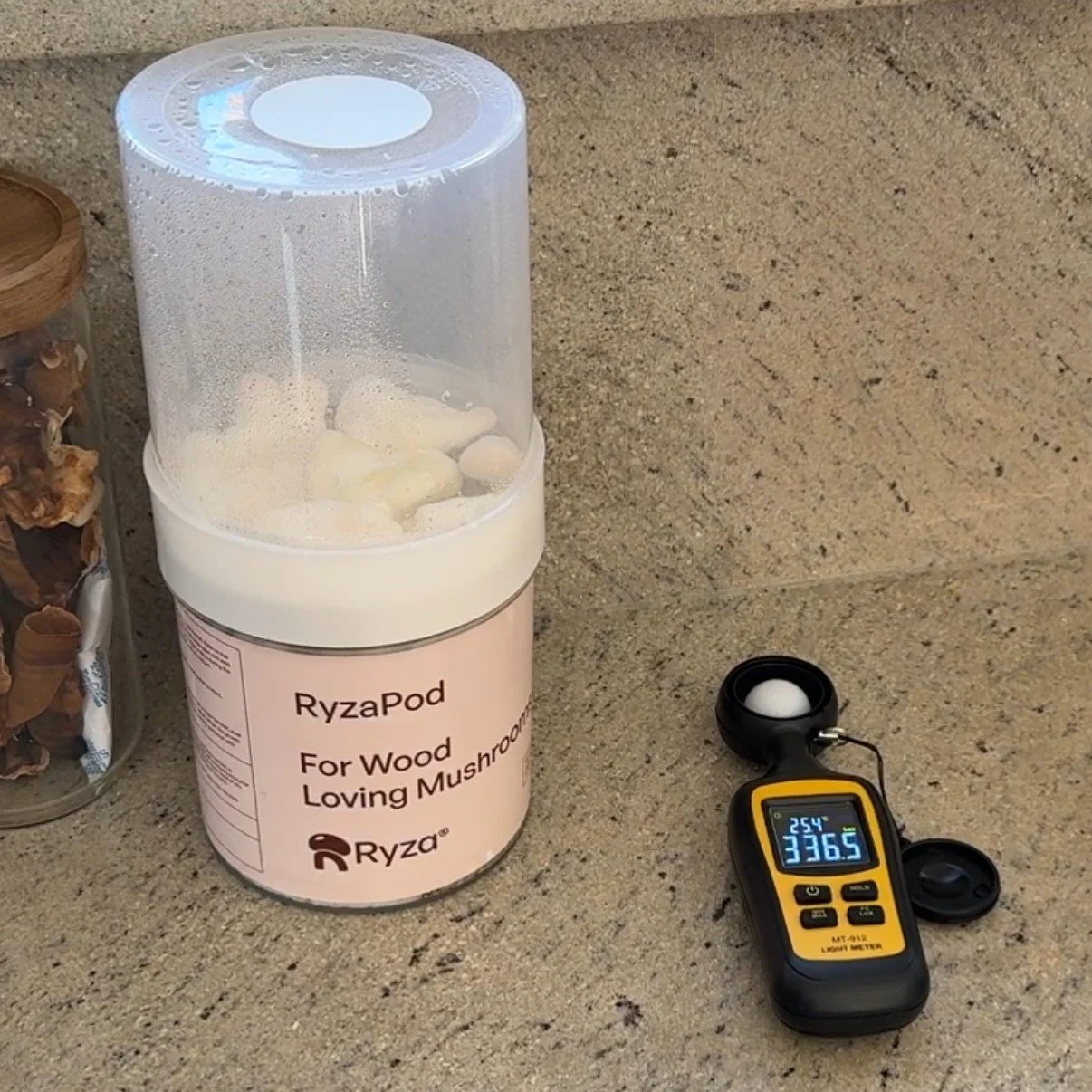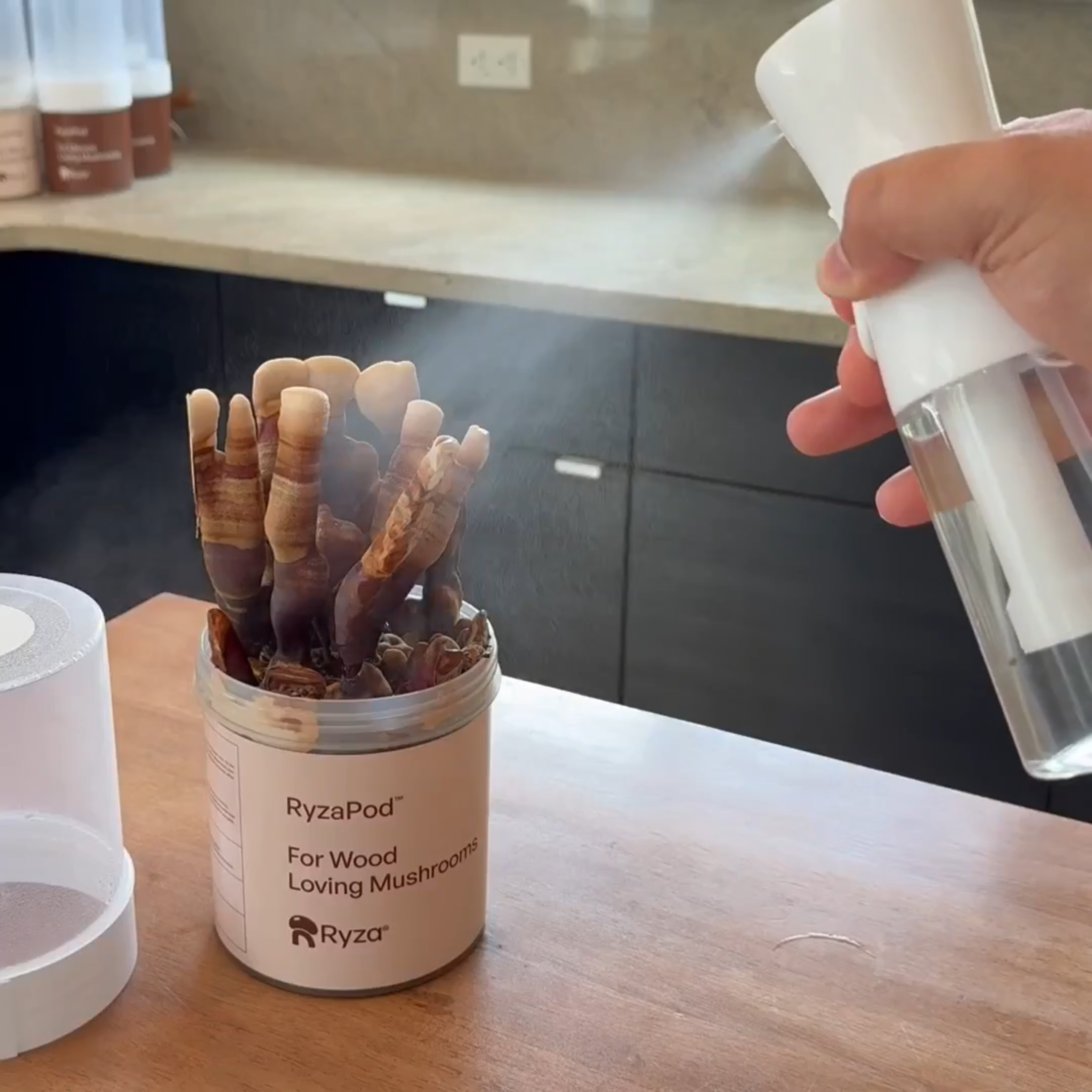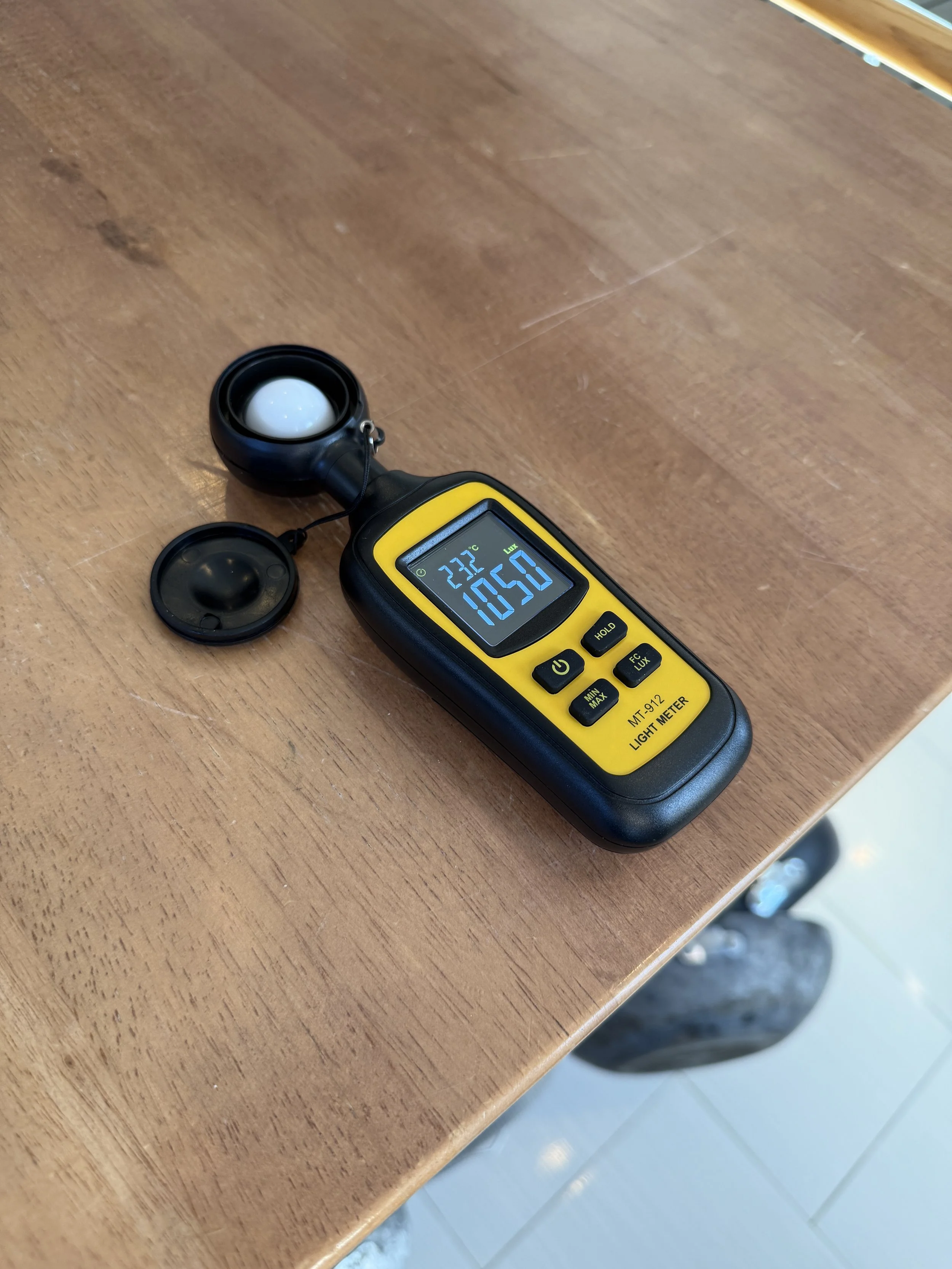Light for Mushrooms: Illuminating the Path to Perfect Fruiting
We tested a few spots around the house to demonstrate how much light they receive.
How to Get the Lighting Right for Better Mushroom Fruiting
A lot of people think mushrooms need total darkness to grow, but that's not quite right. Mushrooms don't photosynthesize like plants do, so they don't use light for food. Still, light matters a lot after the colonization is done and it’s time for the main event: mushroom growing!
In this post, I'll explain why light helps with mushroom development, what levels work best, and some easy guidelines to follow. If you're using something like RyzaPods or growing your own way, getting the light sorted can really boost your results.
Why Light Matters for Mushroom Growth
Mushrooms are fungi that get their energy from breaking down organic stuff. The mycelium, that web-like part underground, spreads through the substrate just fine without any light, and our blackout label sleeve ensures no light gets in the sides that might signal it’s time to pin prematurely. But when it's time for the mushrooms to appear, which we call fruiting, light exposure gives them a nudge.
It tells the mycelium it's in an good spot, so it starts making those little pins that turn into mushrooms and helps them grow straight up. In the wild, this makes sense because light points them toward fresh air for spreading spores. Skip the light entirely, and you might get slow or spotty growth with thin, washed-out mushrooms. Too much harsh light can dry them out or change their color.
Basically, light isn't for feeding them. It's more about guiding when and how they form.
What Light Levels to Use and Simple Tips
For common edible and medicinal mushrooms like oyster, shiitake, or lion's mane mushrooms, aim for gentle, indirect light in the 200 to 1000 lux range. That's about the brightness where you can read easily. Lux is how we measure light hitting a surface, and this level supports fruiting without any issues.
Around 200 to 300 Lux: Picture a basic reading lamp, which puts out about 250 lumens at arms length. Keep the setup a couple feet from the bulb to prevent extra heat, because cooler temperatures are better for this fruiting stage of mushroom cultivation. At this level, you often end up with thicker, tastier mushrooms. If you’re using artificial light for your grows, make sure to turn the lamp off at night.
Check out our post for a full discussion of ideal fruiting conditions, including temperatures, humidity, and light.
500 to 800 Lux: Like the light in a room from a window on an overcast day or a bright LED light that goes in recessed lighting. Try a 12-hour light and dark cycle to match day and night; it can improve your yields.
Up to 1000 Lux: Indirect sun from a bright window. This pushes stronger growth, but steer clear of direct sun, which jumps way over 10,000 lux and can cause problems with heat or moisture loss.
Too bright - at 9400 lux, this direct late afternoon sun is great for occasional photo shoots to flex your fruits, but too much for sustained growing.
A good rule: If you can read a book there without squinting, it's enough light for mushrooms. You don't need special equipment. Everyday lights or windows do the job.
Final Thoughts: Stick to Basics for Great Results
In short, mushrooms just need a bit of light to kick off fruiting properly. Stay in that 200 to 1000 lux zone, from a plain reading light to soft window sun, and you'll get solid harvests every time. Play around with what you have, but don't make it complicated. That usually backfires. Enjoy your growing. Your next batch could be your best yet!





